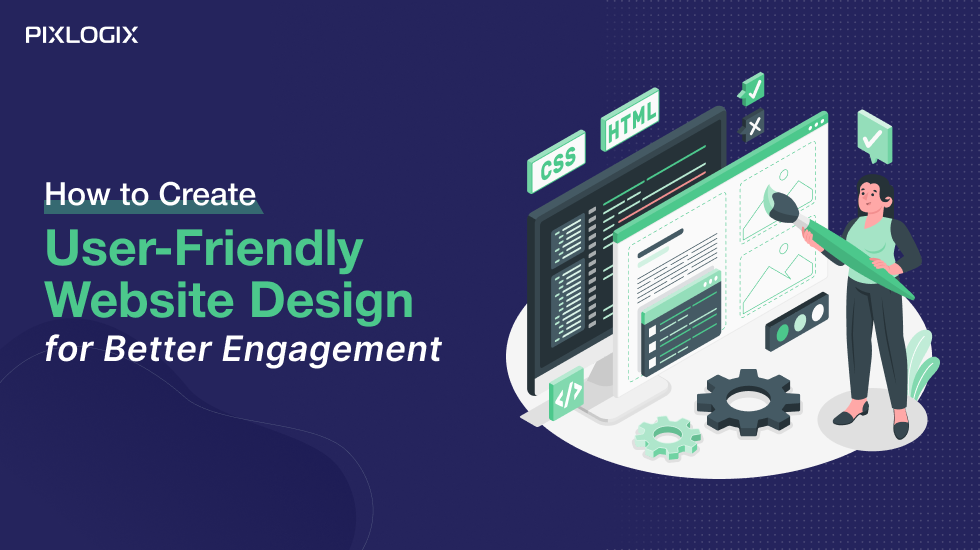
In 2025, digital success depends on only one key factor, which is user satisfaction. When a business plans to bring its digital product to life, there’s more to consider. It involves security, scalability, and compliance–all crucial for real-world performance. Today, a weak UI/UX strategy is another reason for product failure. IT leaders often prefer a user-centred design approach to overcome this challenge. It helps them improve visibility, enhance productivity, and build trust.
Also, a structured digital product strategy is the key to consistent growth. It redefines how people perceive, interact with, and derive value. If you want to create a well-defined design approach? Then start the process by understanding your target audience. And define buyer personas, document user expectations, and map the entire journey. Finally, translate these insights into measurable design strategies.
This blog details why every digital product needs a strong UI/UX strategy. Also, let’s see how it’s implemented and how global brands use it effectively.
What are the Benefits of a UI/UX Design Strategy
There are various benefits of a strong UI/UX design strategy benefits that directly influence your business’s bottom line and brand perception in consequential ways. These include:
1. Higher User Retention
Every dollar spent on UX yields $100 in return, indicating an astounding 9,900% return on investment, per a Forrester report. This is the power of a user-centric design to continue retaining clients.
A well-built digital product piques and holds the interest of users. Top brands like Spotify and Airbnb widely focus on user experience design. The audience found the platform easy to navigate, which encouraged them to return daily.
2. Improved Customer Engagement
A fluid and straightforward design lessens friction in user interactions, whether they’re completing a purchase, signing up, or simply perusing the features. By making actions on your product easier to accomplish, you may significantly lower churn rates and drive deeper engagement.
Leading companies like Zomato designed a clear interface to engage their users in a better way. This helped users to order food faster while reducing cognitive load.
3. Stronger Brand Perception
Design communicates trust. A contemporary and consistent design will make your product feel more trustworthy. It also helps users know your brand better. Remember that a great brand perception is not just about looks. It’s also about what a user feels while interacting with your product.
For example, a consumer will voluntarily trust your product if it’s easy to use and intuitive. Top-tier enterprises like Apple follow this strategy to grow their brand. More than effective marketing, their main goal is to deliver a hassle-free user experience.
4. Reduced Development Costs
You can save a lot of money in the long term by investing in a sound UI/UX strategy from the inception. It will help you spot and redress critical faults or flaws before they become bigger problems, thereby cutting down on the need for costly fixes.
Using early wireframes and usability testing in Figma, for instance, reduces post-launch changes drastically.
One of our previous clients was able to save a great deal of time and money on post-launch development changes by identifying a fundamental weakness in their intended user flow with the aid of our early-stage design strategy.
5. Better Scalability & Growth
With a solid design foundation, your product is better positioned to develop more easily as user needs grow. This future-proofs your investment, making it easy for your product to cater to all consumer needs without falling short at any point.
A strategic UI/UX directly supports business goals by improving conversion paths. They help you create well-designed CTAs, frictionless funnels, and goal-oriented microcopy. This often leads to higher form completions, trial activations, and purchases.
How to Create an Efficient UI/UX Design Strategy?
Business leaders often follow a structured approach. From finding target users to testing and refining products, every step adds value to your success. Let’s see how a professional UX design company will approach it:
1. Understand User Behaviour
At first, identify your target users. Then, conduct some interviews and collect related surveys and heatmaps about their needs. Also, understand their goals, pain points, and behaviours. For this process, you can also use advanced tools like Hotjar and Google Analytics.
2. Create an Information Architecture
Now, organize all the collected insights to simplify navigation. Here, you can use journey mapping and card sorting to make your design more user-friendly.
3. Develop Engaging Models
Once structured, transform your ideas into interactive prototypes. Developers widely use Figma and Adobe XD for visualizing workflows. Also, it helps them spot usability gaps early on.
4. Test Your Design
Before entering into full-scale development, validate your decision. A/B Testing and user feedback sessions can help you with this process.
5. Improve Continuously
Finally, use all these insights to make ongoing changes. And also ensure that every update aligns perfectly with your user needs.
This process ensures that your strategy is both user-validated and business-aligned. This effective approach helps teams create measurable design outcomes.
5 Reasons Your Digital Product Needs a UI/UX Design Strategy
So far, we’ve established the importance of a UI/UX strategy for digital products. But you might doubt why do you need a user-centered design approach? Here are five concrete reasons why:
1. User Expectations Are High
It should come as no surprise that in today’s digital age, user expectations are abundantly high. They want apps and websites to be fast, simple, and intuitive. Suppose they find the product to be lackluster or complicated. They won’t think twice about leaving and seeking your competitor instead.
Meeting these set standards isn’t just about looks. It’s all about seamless experiences that grab user attention. And a solid user-friendly design strategy is the way to go.
2. Complex Products Need Clear Navigation
Today, digital products keep evolving in features and functionalities. So, they can easily become overwhelming to grasp. Basically speaking, without clear navigation and structure, users get lost or frustrated. An efficient UI/UX design strategy helps ensure that even the most complex of products feels simpler and approachable, earning it affinity with your clientele.
Map primary user tasks to clear navigation paths. And reduce cognitive load with progressive disclosure. Reveal complexity only when users need it.
3. Mobile & Multi-Device Use
Users are now switching seamlessly between multiple devices. So, your product should work smoothly on every device. A robust strategy will help you create a responsive UI/UX design. It performs on all devices irrespective of their locations. This gives a significant boost to your product’s accessibility. Also, it makes it more reliable in the eyes of your users.
Adopt a mobile-first approach for creating CTAs and conversion flows. Also test them across device classes, and ensure touch interactions and form fields are optimized. This helps you to minimize drop-off on small screens.
4. Competitive Advantage
The online marketplace today has become packed, and people have at their disposal a plethora of alternatives. A great digital product design strategy can give your product a competitive edge over others in its category by allowing you to make it faster, simpler, and more engaging to use.
Because of its functionality and ease of use, your product could likely become the top preference for many, even if other alternatives in the online market have precisely the same components and attributes. Remember, a good UI/UX will elevate your brand image.
5. Turns Feedback into Action
A successfully executed UI/UX design strategy makes collecting, evaluating, and responding to user input vastly simple. It helps you identify pain points and improvement opportunities. This commences a continual cycle of development, thus guaranteeing your product is always current and constantly fulfils consumer expectations in dynamic contexts.
Final Thoughts
As of now, you know the importance of UI/UX design. And how its correct implementation influences customer impression of a digital product. When you formulate a solid UI/UX design strategy, you can achieve lasting results. It additionally allows you to gain an edge over the competition through easy and early comprehension of one of the most important aspects of any product: the user experience.
That said, building and executing a successful UI/UX strategy is no cinch. In fact, it’s quite the challenging prospect. It necessitates research, expertise, and a clear understanding of user behaviour. And that’s where working with an expert UI/UX design company in India, such as ABC, could make all the difference.
Our UI/UX design services have been specifically created to help you create digital products that are not only visually appealing but also provide excellent user experiences.
Samir Bhimbha is the Founder & CEO of Pixlogix Infotech Pvt. Ltd. which offers web and app solutions to fulfill business's online needs and help to improve their online presence with many clients in the USA, Europe, Australia, and more. He is a skilled entrepreneur, web designer, developer, and team leader who can handle every situation. With 15+ years of experience in UX/UI design and web development, he is leading a team of IT professional talents.
Related Post

Get in Touch Now!
Have a word with our expert consultants about your next project to get suggestive guidance & proposal.
Sales Inquiry
HR Inquiry
India’s First SOTD Winner on Awwwards.com – 2010







